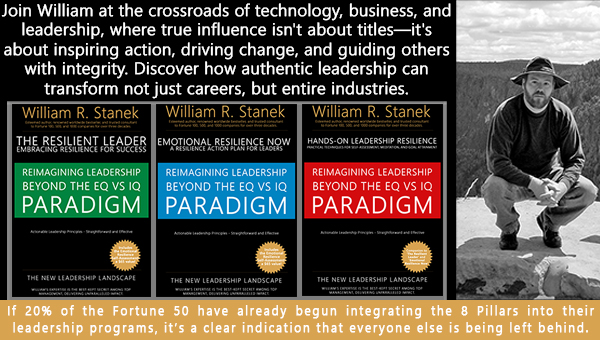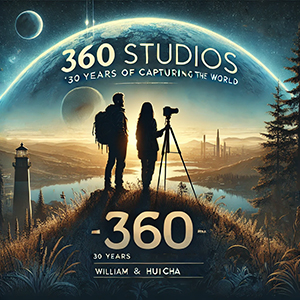The Legacy of Light: Using Natural Light to Transform Ordinary Scenes
(May 9, 2025)

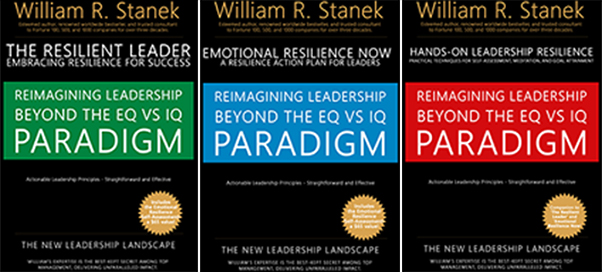
Join William at the crossroads of technology, business, and leadership, where true influence isn't about titles - it's about inspiring action, driving change, and guiding others with integrity. Discover how authentic leadership can transform not just careers, but entire industries.
Discover William Stanek's Exclusive Art Collection
Explore and purchase the stunning art featured on this site. Own a piece of William Stanek's unique and captivating artwork today!
Natural light is one of the most powerful and versatile tools in photography, and for William Stanek, it is the cornerstone of his artistic process. His mastery of natural light allows him to transform ordinary scenes into extraordinary works of art, creating images that resonate deeply with viewers. This article delves into the intricacies of how William harnesses the ever-changing qualities of natural light, exploring the various types of light he uses, his techniques for capturing it, and the philosophical underpinnings that guide his approach.
The Philosophy of Light: William Stanek’s Artistic Vision
William Stanek’s approach to natural light is deeply rooted in his artistic philosophy. For him, light is not just a tool for illuminating a scene; it is an essential element that shapes the mood, emotion, and narrative of his photographs. He views light as a living entity—dynamic, transformative, and capable of revealing the soul of a landscape or a subject.
William’s philosophy of light is grounded in the belief that every moment of light is unique. He often speaks of light as a fleeting gift, one that can change dramatically within seconds, and his work reflects an acute awareness of this temporal quality. His photographs are a celebration of these ephemeral moments, capturing the beauty of light as it interacts with the world around us.
This philosophical approach to light informs every aspect of William’s work, from the way he composes a shot to the precise timing of his exposures. It is this deep understanding of and respect for light that allows him to create images that are not only visually stunning but also rich in meaning and emotional depth.
The Golden Hour: Capturing Magic in Morning and Evening Light
The golden hour, the period just after sunrise and before sunset, is a time when the light takes on a warm, golden hue, casting long shadows and imbuing the world with a magical quality. For many photographers, the golden hour is a favorite time to shoot, and for William Stanek, it is a time of day that holds particular significance.
William’s golden hour photography is characterized by a deep sense of tranquility and warmth. He uses the soft, diffused light of the golden hour to create images that are both serene and inviting. The warm tones of the light during this time enhance the natural beauty of his subjects, whether it’s a landscape bathed in the first light of dawn or a cityscape glowing in the last rays of the setting sun.
What sets William’s golden hour photography apart is his ability to capture the subtle nuances of light during this time. He is a master of using the interplay of light and shadow to add depth and dimension to his images. By carefully positioning himself in relation to the light source, he is able to highlight the textures and details of the scene, creating photographs that are rich in contrast and complexity.
The Blue Hour: Embracing the Quiet Mystery of Twilight
Following the golden hour, the blue hour is another favorite time for William to shoot. This is the period of twilight, just before sunrise or after sunset, when the sky takes on a deep blue color and the world is bathed in a soft, ethereal light. The blue hour is a time of transition, a moment of quiet mystery that William captures with remarkable skill.
William’s blue hour photography often conveys a sense of solitude and introspection. The cool, blue tones of the light create an atmosphere of calm and serenity, inviting viewers to pause and reflect. His images from this time of day are often tinged with a sense of melancholy, as the fading light signals the end of the day or the beginning of the night.
One of the key techniques William uses during the blue hour is long exposure photography. By keeping the shutter open for longer periods, he is able to capture the subtle movements of the clouds, the gentle flow of water, or the twinkling of city lights, all while maintaining the soft, dreamlike quality of the light. This technique allows him to create images that are both dynamic and tranquil, capturing the essence of the blue hour in all its quiet beauty.
Harsh Midday Light: Turning Challenges into Opportunities
While many photographers prefer to avoid shooting during the harsh midday light, William sees it as an opportunity to push the boundaries of his craft. Midday light is often considered difficult to work with because it can create strong contrasts, harsh shadows, and washed-out colors. However, William’s mastery of light allows him to turn these challenges into creative opportunities.
When working with harsh midday light, William often looks for ways to use the strong contrasts to his advantage. He seeks out subjects and compositions that can benefit from the high-contrast lighting, such as architectural details, textured surfaces, or dramatic landscapes. By embracing the intensity of the light, he is able to create images that are bold, striking, and full of energy.
William also uses various techniques to soften or control the harshness of midday light. For example, he may position himself in the shadow of a tree or building to create a natural diffuser, or he might use reflective surfaces to bounce light back onto his subject, filling in the shadows and adding depth to the image. His ability to adapt to different lighting conditions is a testament to his skill and versatility as a photographer.
The Dance of Shadows: Light and Shadow as Compositional Elements
One of the hallmarks of William Stanek’s photography is his exceptional use of light and shadow as compositional elements. He understands that light and shadow are two sides of the same coin, and he uses both to create images that are visually compelling and emotionally resonant.
In William’s work, shadows are not merely the absence of light; they are an integral part of the composition, adding depth, contrast, and intrigue to the image. He often uses shadows to frame his subjects, to create leading lines that draw the viewer’s eye into the scene, or to add a sense of mystery and drama. The interplay between light and shadow in his photographs is a reflection of his deep understanding of how light shapes our perception of the world.
William’s use of shadow is particularly evident in his black-and-white photography, where the absence of color allows the viewer to focus entirely on the tonal contrasts and the relationship between light and dark. In these images, the shadows become as important as the light itself, creating a sense of balance and harmony that is central to his artistic vision.
Capturing Movement: The Fluidity of Light in Motion
Light is never static, and William’s photography often conveys a sense of movement, whether it’s the changing light of a sunset, the flickering of fireflies, or the flow of a river. He is particularly skilled at capturing the fluidity of light in motion, using it to create images that are dynamic and full of life.
One of William’s techniques for capturing movement is to experiment with shutter speeds. By using fast shutter speeds, he can freeze a moment in time, capturing the precise instant when the light is at its most striking. Conversely, by using longer exposures, he can blur the movement of light, creating a sense of flow and continuity that adds a dreamlike quality to his images.
This approach to capturing movement is evident in William’s landscape photography, where he often uses long exposures to capture the motion of water, clouds, or wind-blown grass. These images convey a sense of time passing, of nature in constant motion, while also highlighting the beauty of the light as it interacts with the environment.
Light as Emotion: Creating Mood and Atmosphere
For William Stanek, light is not just a visual element; it is also an emotional one. He uses light to create mood and atmosphere in his photographs, to convey feelings of joy, melancholy, wonder, or tranquility. His ability to manipulate light to evoke specific emotions is one of the defining features of his work.
In his sunrise and sunset photography, for example, William uses the warm, golden light to create a sense of peace and contentment. The soft, diffused light of these moments is perfect for capturing scenes that are imbued with a sense of hope and renewal. On the other hand, his blue hour photography often conveys a more introspective mood, with the cool, blue tones creating an atmosphere of quiet reflection.
William’s use of light as an emotional tool is also evident in his portrait photography. He carefully chooses the direction, intensity, and color of the light to highlight the subject’s features and to convey a particular mood. Whether it’s the soft, flattering light of a window or the dramatic, high-contrast light of a single spotlight, William uses light to tell a story, to reveal the inner life of his subjects.
The Ethical Use of Light: Balancing Art and Responsibility
As a photographer who often works in natural environments, William Stanek is acutely aware of the ethical considerations involved in his work. He believes that light is a gift from nature, one that should be used responsibly and with respect. This philosophy extends to his approach to conservation photography, where he uses light to highlight environmental issues and to advocate for the protection of natural landscapes.
William’s ethical use of light is evident in his commitment to minimizing his impact on the environments he photographs. He often chooses to work with natural light rather than artificial lighting setups, which can be disruptive to wildlife and ecosystems. By using the available light, he is able to capture the beauty of the natural world without altering or damaging it.
In addition to his technical considerations, William also believes that photographers have a responsibility to use their work to raise awareness about important issues. Through his use of light, he seeks to draw attention to the beauty and fragility of the natural world, to inspire others to appreciate and protect it. His photography is not just about capturing beautiful images; it is also about making a positive impact on the world.
Light in Unexpected Places: Finding Beauty in the Ordinary
One of the most remarkable aspects of William Stanek’s photography is his ability to find beauty in the most unexpected places. He often seeks out scenes that others might overlook, using light to reveal the hidden beauty in everyday objects, urban environments, or seemingly mundane landscapes. For William, light has the power to transform the ordinary into the extraordinary, to turn the mundane into something magical.
In his urban photography, for example, William often captures the play of light on buildings, streets, and alleyways, finding beauty in the patterns of shadows, the reflections in windows, or the glow of streetlights. He is particularly skilled at using light to create a sense of depth and dimension in his images, turning flat, lifeless scenes into vibrant, dynamic compositions.
William’s ability to find beauty in the ordinary is a reflection of his belief that light is everywhere, that it has the power to illuminate even the most overlooked corners of the world. His photographs are a testament to the idea that beauty is not confined to grand, dramatic landscapes; it can be found in the simplest of scenes, if only we take the time to look.
The Legacy of Light: William Stanek’s Enduring Influence
William Stanek’s mastery of natural light has not only defined his own work; it has also influenced a generation of photographers. His ability to harness the power of light to create images that are both technically perfect and emotionally resonant
has left an indelible mark on the world of photography. The way he sees and uses light has set a standard for photographers who aspire to capture not just the physical appearance of a scene but its soul.
William’s influence extends beyond his individual photographs. His workshops, lectures, and writings have inspired countless photographers to explore the possibilities of natural light, to understand its nuances, and to use it as a tool for storytelling. His emphasis on the importance of patience, observation, and respect for the natural world has shaped the practices of many who follow in his footsteps.
Moreover, William’s legacy is not just about the images he has created, but also about the philosophy of light that he has shared with the world. He has shown that light is not just a technical aspect of photography but a profound medium of expression, capable of conveying emotions, telling stories, and revealing the hidden beauty of the world around us.
Conclusion: A Lifelong Journey with Light
William Stanek’s journey with light is a lifelong exploration of one of the most fundamental elements of photography. From the golden glow of sunrise to the quiet mystery of twilight, from the harsh contrasts of midday to the soft, reflective light of dusk, William has mastered the art of using light to transform ordinary scenes into extraordinary works of art.
His work is a celebration of the power of light to evoke emotions, to tell stories, and to connect us with the world in a deeper, more meaningful way. Through his photographs, William invites us to see the world through his eyes, to appreciate the beauty of light in all its forms, and to find inspiration in the way it illuminates our lives.
As William continues to explore the possibilities of light in his work, his legacy will undoubtedly continue to inspire future generations of photographers. His approach to light is not just a technique but a philosophy—a way of seeing and understanding the world that transcends the boundaries of photography and touches the very essence of human experience.
In the end, William Stanek’s legacy of light is a testament to the enduring power of natural light in photography. It is a reminder that light, in all its forms, is a gift that can transform the ordinary into the extraordinary, and that, in the hands of a master, it can create images that resonate deeply with the human spirit.
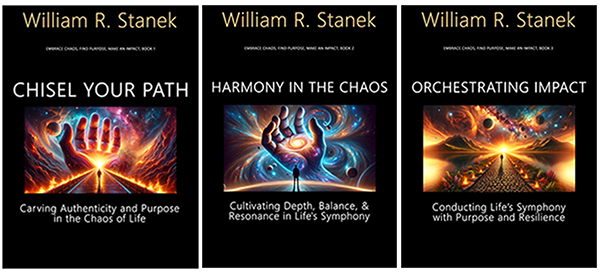
Transform your life with practical wisdom. Discover William Stanek's 'Living Well' series - your guide to a balanced and fulfilling life.
Your Support Matters
Purchasing artwork from William Stanek's collection not only brings beauty into your life but also helps us continue to share. Thank you for supporting our creative journey!
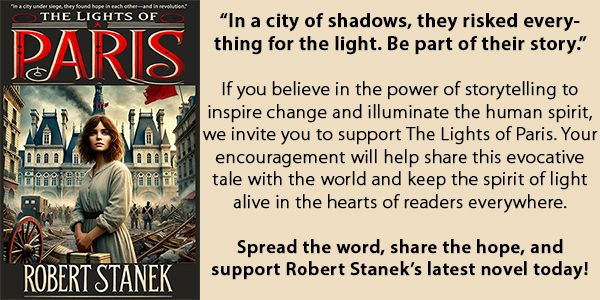
Support The Lights of Paris by Robert Stanek, William Stanek's pen name! Through vivid historical detail and deeply moving character stories, Robert takes readers on an unforgettable journey through one of history’s most transformative times.
